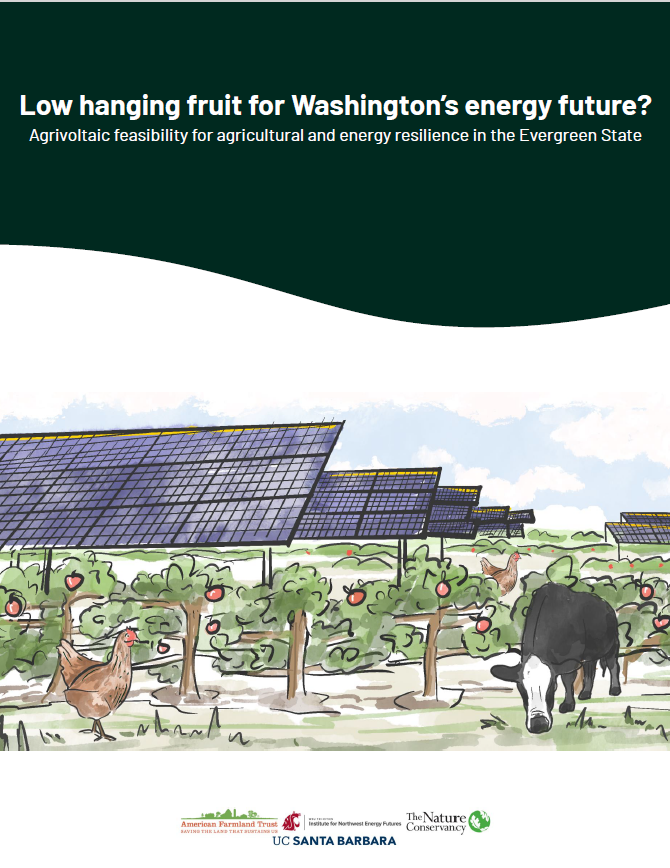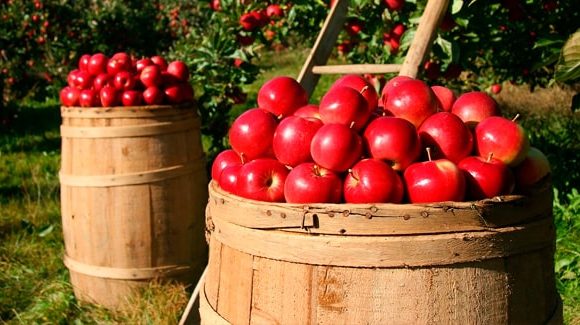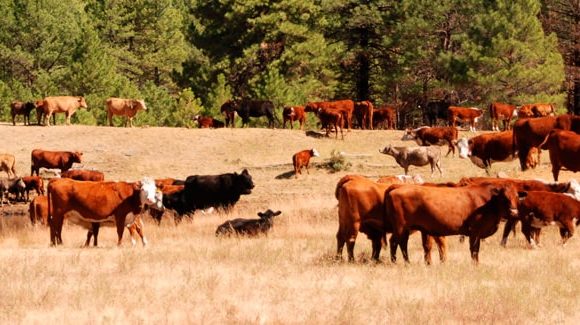Low Hanging Fruit for Washington’s Energy Future? Agrivoltaic Feasibility for Agricultural and Energy Resilience in the Evergreen State
This comprehensive report assesses the feasibility of agrivoltaics—the practice of intentionally integrating agriculture and solar energy—in Washington State from a technical and social perspective using a multi-pronged approach. The report provides an overview of research to-date on agrivoltaics, interpreting that research in the Washington context. It also maps Washington’s agricultural lands to understand the suitability for agrivoltaics and presents a modeling approach that merges property-level solar array design with crop growth to assess agrivoltaic systems design.
The work was funded through an award from the Washington State Department of Commerce and led by The Nature Conservancy of Washington State.

Author
Max R. Lambert, Addie Candib, Grace Wu, Riley Tinianov, Karina Schoenbachler, Jamie Robertson, Nicholas Altadonna, Md. Redwan Ahmad Khan, Kirti Rajagopalan, Matt Yourek, Lilly Fink Shapiro, Austin Kinzer, and Chad Kruger
Publisher
Washington, D.C.: American Farmland Trust; Seattle, WA: The Nature Conservancy; Santa Barbara, CA: Spatial Climate Solutions Lab, University of California; Pullman, WA: College of Agricultural, Human, and Natural Resource Sciences, Washington State University; Pullman, WA: Department of Biological Systems Engineering, Washington State University; Wenatchee, WA: Tree Fruit Research & Extension Center, Washington State University; Pullman, WA: Center for Sustaining Agriculture & Natural Resources, Washington State University; Richland, WA: Institute for Northwest Energy Futures, Washington State University






